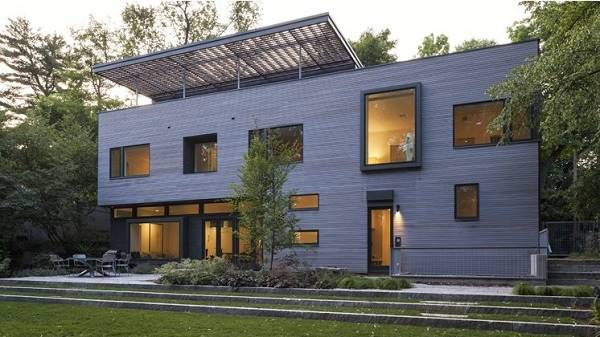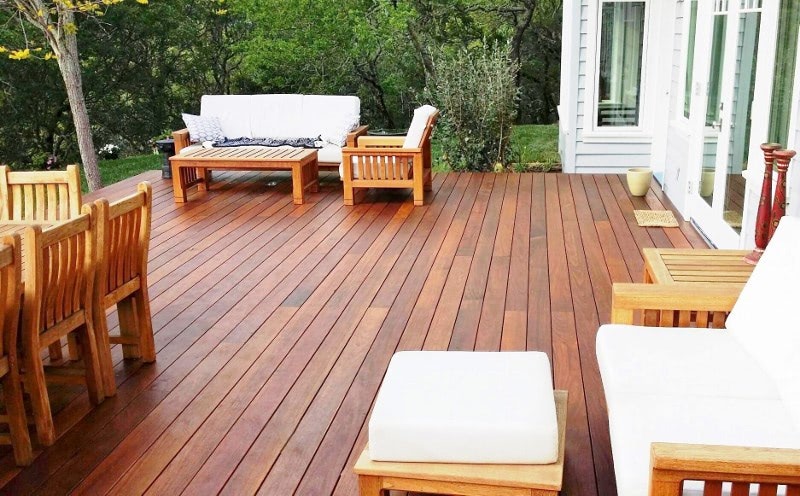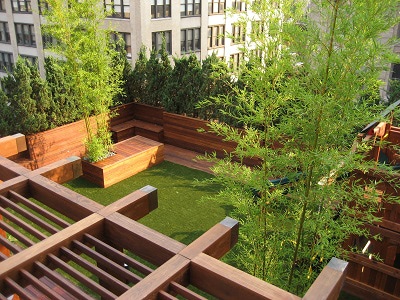In today's world, where environmental concerns are at the forefront of everyone's minds, it is more important than ever to focus on sustainable practices. Especially when it comes to construction. Green building materials have emerged as a transformative solution that benefits both the environment and the people who inhabit these spaces.
 Sustainable green roof design with live plantings
Sustainable green roof design with live plantings
By integrating eco-friendly materials and techniques into the construction process, we can significantly reduce the carbon footprint of buildings and create a healthier, more sustainable future.
Not only do green building materials help in conserving natural resources, but they also contribute to improved energy efficiency, reduced waste, and healthier indoor environments. From sustainable timber and recycled steel to energy-efficient windows and insulation made from natural fibers, these materials offer alternatives to traditional construction methods that are harmful to the environment.
 Sustainable rainscreen design
Sustainable rainscreen design
By adopting green building practices, we can minimize the impact on the planet while also enjoying lower energy costs and enhanced comfort in our living and working spaces. In this article, we will explore the various benefits of using green building materials and why they are crucial for building a better world. So, let's delve deeper into the world of sustainable construction and discover how these materials are shaping the future of our built environment.
Sustainability in Green Building: The Environmental Impact of Traditional Materials
Traditional building materials, such as concrete, steel, and brick, have a significant environmental impact. The production of these materials involves the extraction and processing of raw materials, which requires large amounts of energy and contributes to greenhouse gas emissions. Additionally, the disposal of construction waste adds to the burden on landfills.
Concrete, for instance, is one of the most widely used construction materials but has a high carbon footprint. The production of cement, the main component of concrete, involves the release of large amounts of carbon dioxide. Steel, another commonly used material, requires the extraction of iron ore and the use of energy-intensive processes, contributing to deforestation and pollution. Brick production also involves the consumption of natural resources and the emission of pollutants.
Benefits of Using Sustainable Building Materials
The use of green building materials offers a range of benefits that go beyond reducing the environmental impact of construction. One of the key advantages is improved energy efficiency. Green materials, such as insulation made from natural fibers, energy-efficient windows, and solar panels, can significantly reduce energy consumption in buildings. This leads to lower energy costs for occupants and a reduced reliance on fossil fuels.
Green building materials also contribute to better indoor air quality. Traditional materials, such as paints and adhesives, often contain volatile organic compounds (VOCs) that can be harmful to human health. In contrast, green materials are low in VOCs, promoting a healthier indoor environment. Additionally, materials like natural fibers and wood have natural moisture-regulating properties, preventing the growth of mold and mildew.
Furthermore, green building materials help in conserving natural resources. By using recycled materials, such as recycled steel or reclaimed wood, we reduce the demand for virgin resources. Sustainable timber, for example, is harvested from responsibly managed forests, ensuring the preservation of biodiversity, and preventing deforestation. These materials also have a longer lifespan, reducing the need for frequent replacement and further reducing waste.

Sustainably harvested hardwood decking has a 40+ year lifespan
Types of Green Building Materials
The range of available green building materials is continually expanding, offering a wide variety of options for sustainable construction. Some of the commonly used materials include:
- Sustainable timber: Wood sourced from responsibly managed forests, including the Forest Stewardship Council® (FSC), PEFC and others are eco-friendly alternatives to traditional wood.
- Recycled steel: Steel produced from recycled scrap metal reduces the demand for virgin steel production and saves energy. It is a durable and versatile material used in various applications, including structural elements.
- Energy-efficient windows: These windows have advanced glazing technologies that minimize heat transfer, improving insulation and reducing energy consumption for heating and cooling.
- Insulation made from natural fibers: Materials like wool, cotton, and cellulose are used for insulation, providing effective thermal performance while being non-toxic and environmentally friendly.
- Solar panels: These panels harness the power of the sun to generate clean and renewable energy, reducing reliance on fossil fuels and lowering carbon emissions.
Sustainable Sourcing and Manufacturing of Green Building Materials
To ensure the sustainability of green building materials, it is essential to focus on their sourcing and manufacturing processes. Sustainable sourcing involves using materials that are responsibly harvested or recycled. This includes verifying the origin of timber, ensuring it comes from forests managed in an environmentally friendly and socially responsible manner.
 FSC Certified Machiche hardwood being sustainably harvested in Guatemala
FSC Certified Machiche hardwood being sustainably harvested in Guatemala
Wood is one of the few natural products that is a totally renewable resource. When responsibly harvested, wood is often considered the most sustainable building material within the construction industry. Additionally, wood stores lots of carbon, making it very desirable due to its lower carbon footprint.
Manufacturing green building materials should also prioritize energy efficiency and waste reduction. This includes using clean and renewable energy sources during production, minimizing water usage, and implementing recycling and waste management systems. Companies can obtain certifications, such as the Leadership in Energy and Environmental Design (LEED), to demonstrate their commitment to sustainable practices.
 Pura NFC is manufactured by Trespa, who's manufacturing goal is to have a zero net carbon footprint by 2030
Pura NFC is manufactured by Trespa, who's manufacturing goal is to have a zero net carbon footprint by 2030
Green Building Certifications and Standards for Sustainability
Green building certifications and standards play a crucial role in promoting sustainable construction practices and encouraging the use of green building materials. These certifications, such as LEED and the BREEAM (Building Research Establishment Environmental Assessment Method), assess the environmental performance of buildings based on various criteria, including energy efficiency, water conservation, and materials selection.
Certified buildings are recognized for their reduced environmental impact and are often more attractive to tenants and investors. They also contribute to the overall sustainability goals of communities and municipalities, helping to create greener and healthier cities.
 Thermally modified Hemlock is available PEFC Certified
Thermally modified Hemlock is available PEFC Certified
Planning your next green project? Request a quote here.
Numerous green building projects around the world have demonstrated the effectiveness and benefits of using green building materials. One notable example is the Bullitt Center in Seattle, Washington. This six-story office building achieved the highest level of LEED certification and is designed to generate more energy than it consumes using solar panels and a geothermal system. The construction incorporated sustainable materials, such as FSC-certified timber and low-toxicity finishes, while also prioritizing natural daylight and ventilation.
Another inspiring project is The Tree House at Memorial City in Houston, Texas. This multi-use project focused on energy efficiency, sustainable design, and certified lumber. It features solar panels, rainwater harvesting systems, and FSC Certified Machiche wood rainscreen siding and decking. The building achieved LEED Platinum status and is considered ‘the greenest building in Texas’.
These case studies highlight the successful integration of green building materials and practices, leading to environmentally responsible and energy-efficient buildings.
While green building materials offer numerous benefits, there are still challenges and misconceptions that need to be addressed. One common misconception is that green materials are more expensive than traditional ones. While it may be true that some green materials have a higher upfront cost, they often provide long-term savings through reduced energy consumption and maintenance.
Another challenge is the limited availability and awareness of green building materials. Building professionals and consumers may not be familiar with the range of options available or the environmental benefits they offer. Education and awareness campaigns are essential in promoting the adoption of green materials and dispelling misconceptions.
See the types of Mataverde sustainable wood siding options. Request your sample here.
If you are a builder or homeowner looking to incorporate green building materials into your construction projects, there are several steps you can take:
By taking these steps, you can contribute to a more sustainable future and create buildings that are not only environmentally responsible but also cost-effective and comfortable.
Green building materials are a critical component of sustainable construction practices. They offer a range of benefits, including reduced environmental impact, improved energy efficiency, and healthier indoor environments. As the demand for sustainable buildings continues to grow, the availability and variety of green building materials will also increase.
To build a better world, it is essential that we prioritize the use of green materials in construction projects. By adopting these materials and practices, we can create buildings that minimize harm to the environment, reduce energy consumption, and provide healthier spaces for people to live and work in.
The future of green building materials is promising, with ongoing research and innovation driving the development of even more sustainable and efficient options. By embracing these materials and making sustainable choices, we can contribute to a greener and more sustainable future for generations to come.
In conclusion, green building materials offer a range of benefits that go beyond reducing the environmental impact of construction. By using sustainable materials, conserving natural resources, and adopting energy-efficient practices, we can create buildings that are not only environmentally responsible but also more cost-effective and comfortable for occupants. As the demand for sustainable construction continues to rise, the future of green building materials looks promising, with ongoing research and innovation driving the development of even more sustainable options. By embracing these materials and making sustainable choices, we can build a better world for ourselves and future generations.

 Machiche rainscreen siding adorns the Tree House at Memorial City
Machiche rainscreen siding adorns the Tree House at Memorial City










